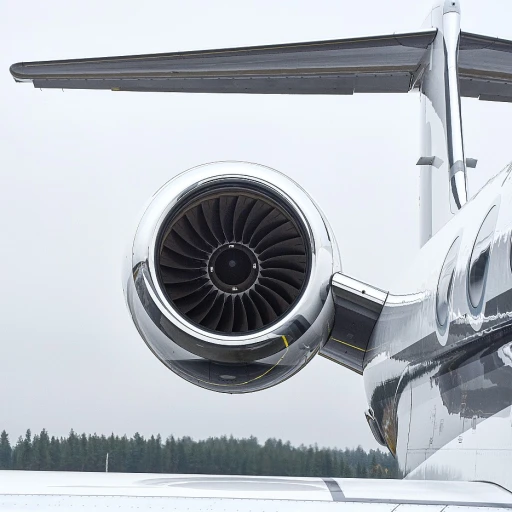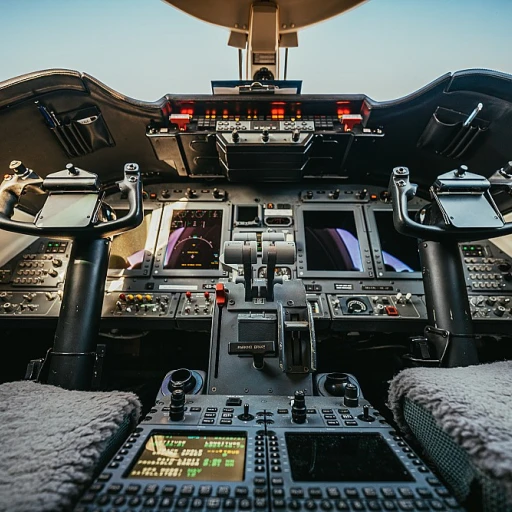The evolution of large private jets
Stepping back in time: the early beginnings
The journey of large private jets began shortly after World War II, when military advancements spurred on innovations in aviation. In those days, only the ultra-elite could dream of such luxury. The first models were rudimentary compared to today's standards but were still a significant leap forward in personal air travel. Boeing, with its Boeing 707, and Lockheed with the JetStar became the pioneers in the 1960s, setting the stage for the evolution yet to come.
Leap to luxury: the 1980s boom
The 1980s marked a turning point, where private jets became not just a means of transportation but a symbol of status. This era saw the emergence of iconic models like the Gulfstream IV, renowned for its superior range and cabin comfort. New technologies enabled longer flights and greater comfort, making private jets more appealing for business magnates and celebs. In this decade, the development of specialized corporate jets also took off, making air travel for business executives more efficient and luxurious.
Modern marvels: the 21st century
Entering the 21st century, private jet technology has leaped ahead. The introduction of models like the Bombardier Global Express and the Dassault Falcon series has redefined luxury in the air. Equipped with ultra-long range capabilities, state-of-the-art avionics, and whisper-quiet cabins, these jets are the epitome of modern luxury. According to FAA statistics, larger jets can travel at cruise speeds of up to 600 mph, covering vast distances while ensuring passenger comfort. Recent years have also seen a shift towards sustainability, with manufacturers exploring fuel-efficient engines and eco-friendly materials.
Advancements in technology: boosting performance and comfort
The evolution isn't just about bigger and faster jets; it's also about a better flight experience. Innovations like the fly-by-wire system have improved flight safety and efficiency. Cabin pressurization technology now ensures a comfortable cabin height, reducing the fatigue associated with long-haul flights. Brands like Gulfstream and Bombardier are continuously pushing the envelope in terms of cabin size, in-flight connectivity, and entertainment options, making each flight an experience in itself. For more insights on technological advancements in the industry, check our coverage on supersonic technology and its impact on luxury jets.
Stay tuned as we explore famous owners and their elite jets in the next section.
Top models in the large private jet category
Gulfstream G700: A flagship in luxury and performance
When exploring top models in the large private jet category, the Gulfstream G700 stands out prominently. Unveiled by Gulfstream Aerospace Corporation, the G700 has set numerous benchmarks in the industry. The jet boasts a range of 7,500 nautical miles, allowing for non-stop flights from New York to Dubai. With a cruise speed of Mach 0.925, it marries speed with unparalleled performance (Forbes).
Bombardier Global 7500: Ultra-long-range leader
The Bombardier Global 7500 is another exceptional model, rivaling the G700 with its own set of impressive specifications. It offers a range of 7,700 nautical miles and a top speed of Mach 0.925. The Global 7500 is tailored for ultra-long-range flights, ensuring maximum comfort and efficiency for its passengers (Jeff Bezos' private jet). With a capacity of up to 19 passengers, the cabin size and amenities onboard make it a favorite for business and leisure flights alike.
Dassault Falcon 8X: French elegance meets efficiency
Dassault’s Falcon 8X is known for its sophisticated design and operational efficiency. This jet can cover 6,450 nautical miles, linking major cities like Los Angeles and London without hassle. The cabin height of 6 feet 2 inches ensures that even the tallest passengers travel comfortably. Its baggage capacity of 140 cubic feet meets the needs of extended travel periods without compromising on luxury (WSJ).
Boeing Business Jet (BBJ): Commercial prowess tailored for private luxury
The Boeing Business Jet series takes commercial aircraft models and transforms them into ultra-luxurious flying palaces. These jets can be customized to include boardrooms, master suites, and even showers. The BBJ 787 Dreamliner, for example, offers a range of over 9,000 nautical miles, an unrivaled figure in the category of large private jets. With a cruise speed of Mach 0.85, it balances efficient travel times with extreme comfort.
Comparison of top models: What's in the cabin?
The battle between these industry giants is often fought over cabin size and luxury. The Gulfstream G700 features five distinct living areas, the Bombardier Global 7500 offers flexible layouts including a master bedroom suite, and the Dassault Falcon 8X is renowned for its quiet cabin and advanced technology. The Boeing Business Jet series, especially the BBJ 787, provides the most customization options, making it suitable for those who prioritize personalized luxury.
Each of these models exemplifies the pinnacle of what the large private jet market offers: unparalleled range, superior cabin comfort, and unmatched performance. Whether it's the ultra-long-range of the Bombardier Global 7500, the quiet sophistication of the Dassault Falcon 8X, or the customizable opulence of the Boeing Business Jet, there's a model tailored to meet the diverse needs of high-profile clients and their unique travel requirements.
Luxury and comfort: inside the cabin
The exquisite interior design: where luxury meets functionality
Stepping into a large private jet, such as a Gulfstream G700 or Bombardier Global 7500, feels like entering a lavish, personalized sanctuary. These jets are not just about speed and range; they're the epitome of luxury and comfort, offering an interior that's designed to perfection. The cabin height of most large private jets is generous, with many offering over 6 feet (1.83 meters), ensuring passengers can move comfortably without feeling cramped. The Gulfstream G700, for example, features a cabin height of 6 feet 3 inches (1.91 meters). This kind of spaciousness is crucial for a comfortable long-range flight, especially when crossing multiple time zones.
Tailored luxury: seating and sleeping arrangements
The seats in these aircraft are typically crafted from the finest materials, featuring leather upholstery and ergonomic designs that cater to both comfort and style. They are not just seats; they are personal recliners that can be converted into flat beds, ensuring passengers can rest properly during ultra-long-range flights. Taking the Bombardier Global 7500 as an example, it comes with the patented Nuage seat that offers deep recline and the first true backrest tilting, similar to a zero-gravity chair.
Entertainment and connectivity: staying connected at 40,000 feet
In today's digital age, connectivity is paramount, and large private jets are equipped with the latest in-flight entertainment and communication systems. The Bombardier Global 7500, for instance, comes with the fastest in-flight internet connectivity through Ka-band, allowing passengers to stream high-definition content, participate in video conferences, or simply stay connected with loved ones.
Culinary experiences: gourmet dining at its finest
Another hallmark of luxury in private jets is the onboard gourmet dining experience. Many large jets feature fully-equipped galleys where personal chefs can prepare meals to suit any palate. The Dassault Falcon 8X, for instance, offers a galley that can be customized with kitchen appliances like ovens and espresso machines, catering to any culinary desire. Whether you crave sushi, a perfectly cooked steak, or vegan delicacies, the sky is literally the limit.
Personalization and customization: a truly unique experience
One of the standout features of large private jets is the level of personalization they offer. Owners can customize everything from the layout of the cabin to the materials and colors used for the interiors. Famous interior design brands like Hermes and Baccarat have collaborated on interior designs for jets, adding a touch of exclusive elegance.
Wellness and comfort: creating a serene environment
Many large jets, like the Gulfstream G700, prioritize passengers' well-being by incorporating advanced climate control systems, reducing cabin noise, and even adjusting cabin pressure to minimize jet lag. A relaxed atmosphere is ensured with low cabin altitude, typically around 4,850 feet in the G700, enhancing overall comfort during long flights.
To dive deeper into the world of opulent private jet interiors, check out our detailed exploration of the luxurious features here.
Performance and range: what sets them apart
Speed and efficiency: cruising at impressive speeds
When it comes to the performance of large private jets, speed and range are key factors that set them apart. These aircraft are designed to provide both rapid travel and long-distance capability, making them highly versatile for business and personal use. The latest supersonic advancements have also contributed to the evolution of modern jets.
The Gulfstream G650, for instance, boasts a maximum cruise speed of Mach 0.925. That's just a fraction below the speed of sound, translating to around 567 knots or 652 mph. This exceptional speed allows passengers to drastically cut down their travel time. Similarly, the Bombardier Global Express can cruise at speeds up to 561 mph, maintaining efficiency and comfort over long distances.
Ultra-long range capabilities: flying further, faster
Large private jets truly shine in their capacity to cover vast distances without refueling. The Gulfstream G650ER, for example, can fly up to 7,500 nautical miles nonstop. This range allows direct flights from New York to Dubai or London to Los Angeles, significantly enhancing travel convenience for global business executives and high-net-worth individuals. The Bombardier Global 7500 offers a similarly impressive range of 7,700 nautical miles, making it one of the top contenders in the ultra-long-range category.
Cabin comfort and size: spacious interiors
Space and comfort are critical in distinguishing large private jets from their smaller counterparts. The cabin height of jets like the Dassault Falcon 8X stands at 6'2", providing ample headroom and comfort for passengers. These large jets are designed to accommodate up to 19 passengers, ensuring that space isn’t compromised even with a full load. The Gulfstream G650 and Bombardier Global 7500 also offer extensive baggage capacity, accommodating lengthy journeys and providing plenty of storage for passenger needs.
Performance in extreme conditions: reliable and robust
Large private jets are not just about luxury; they also offer reliability and excellent performance in challenging conditions. The Dassault Falcon 7X, for example, is renowned for its ability to operate from short runways and even at high altitudes. This versatility ensures that passengers can travel to more remote destinations comfortably and safely, a feat that smaller jets often cannot achieve. Furthermore, the advanced avionics and robust build of these jets make them a preferred choice for many Fortune 500 companies and government officials.
Customization and technology on board: a personalized journey
One of the highlights of large private jets is the level of customization and advanced technology available on board. From in-flight office setups to state-of-the-art entertainment systems, these jets offer a fully personalized travel experience. Aircraft like the Bombardier Global 7500 feature a four-zone cabin that can be configured according to the passenger's preference, providing a seamless blend of productivity and relaxation.
With today's advancements, large private jets continue to push the boundaries of speed, range, and luxury, offering unparalleled travel experiences. The blend of top-tier performance, spacious cabins, and advanced technology makes them a preferred choice for those who value time and comfort in their travel.
Case studies: famous owners and their jets
Celebrity and VIP private jet owners
Large private jets are synonymous with luxury and exclusivity, attracting many celebrities and VIPs who seek comfort, privacy, and efficiency for their travel needs.
One famous owner of a Bombardier Global Express is billionaire Elon Musk. Known for its range and speed, this jet offers the SpaceX and Tesla CEO an efficient way to travel between company locations and personal destinations. The Global Express can fly up to 6,000 nautical miles non-stop, and its cabin height of 6.25 feet ensures a comfortable experience for every passenger.
Another jet-setting celebrity is Oprah Winfrey. Oprah owns a Gulfstream G650, one of the premier models in the large private jet category. With a maximum speed of 610 mph and a range of over 7,000 nautical miles, this Gulfstream jet provides her with the ultimate travel luxury. The cabin size caters to up to 19 passengers, making it perfect for private meetings or family getaways.
Mark Cuban, the owner of the NBA's Dallas Mavericks, owns a Boeing Business Jet (BBJ). This aircraft epitomizes business class, offering unparalleled space and versatility. The BBJ has a spacious cabin size that can be customized, whether it's for boardroom meetings or relaxation lounges. The jet boasts a range of approximately 6,000 nautical miles and can accommodate about 25 passengers.
Examples of corporate usage
Large private jets aren't just for celebrities; they're also essential for business magnates. Warren Buffett's NetJets—a leading provider of private jet rentals—owns an extensive fleet of large and midsize jets, including the Cessna Citation X and Bombardier Global 6000. NetJets clients have access to luxurious travel options, ensuring they reach their destinations promptly and in style. With a cruising speed of up to 607 mph, the Citation X sets the standard for air travel.
The economic rationale of private jet usage
For high-profile individuals and business executives, private jets offer undeniable economic benefits. Consider the downtime saved and the flexibility gained; time is perhaps the most critical resource for these individuals. Large private jets allow them to bypass the hassles of commercial airports and stick to tight schedules.
According to industry insights, the cost of operating private jets varies significantly based on their size and range. For instance, a Dassault Falcon 7X costs approximately $3,000 to $5,000 per hour in operating expenses. However, this expense is often offset by the increased productivity and confidentiality that such travel affords its users.
Comparing large private jets to other categories
How large private jets stack up against other categories
Cabin features compared
When evaluating large private jets against other categories like midsize jets or light jets, one of the standout features is the cabin size. Large private jets often have a cabin height of over 6 feet, allowing passengers to move around comfortably. In contrast, light jets typically have a cabin height of around 5 feet. This added height in large jets not only enhances comfort but also enables more luxurious amenities such as full-sized beds and larger lounging areas.
Range and speed
Large private jets generally outperform their smaller counterparts when it comes to range and speed. For example, a Bombardier Global 7500 has a range of about 7,700 nautical miles and a maximum speed of Mach 0.925 (approximately 710 mph). On the other hand, a mid-size jet like the Cessna Citation Longitude has a range of around 3,500 nautical miles and a top speed of Mach 0.84 (about 625 mph). This significant difference makes large jets more suited for transcontinental and ultra-long-haul flights.
Capacity and baggage space
An essential factor for many is the aircraft capacity, both for passengers (PAX) and baggage. Large private jets can typically carry between 12-19 passengers, whereas midsize jets often accommodate around 8-12 passengers, and light jets hold only 4-8 passengers. Moreover, large jets offer much more baggage capacity, enabling passengers to carry additional luggage without compromising on comfort or space.
Case study: gulfstream G650 vs. cessna citation XLS+
A closer look at specific models clearly illustrates the differences. The Gulfstream G650, one of the leading large private jets, boasts a range of 7,000 nautical miles and a cruise speed of Mach 0.85. It offers unmatched luxury with amenities such as a master suite, a fully functional kitchen, and high-end entertainment systems. Conversely, the Cessna Citation XLS+, a popular midsize jet, has a range of only 2,100 nautical miles and a cruise speed of Mach 0.75. While it provides a high level of comfort and service, it cannot compete with the luxury or long-range capabilities of the Gulfstream G650.
Cost considerations
Finally, let’s address the economics of owning and chartering these jets. Large private jets like the Bombardier Global 7500 may cost upwards of $70 million to purchase, whereas midsize jets like the Dassault Falcon 2000LXS are often priced around $30 million. Chartering costs also vary, with large jets averaging between $8,000 to $12,000 per hour and midsize jets ranging from $4,000 to $6,000 per hour. These cost differences reflect not only the disparity in luxury and performance but also the varying operational costs such as fuel, maintenance, and crew.
The economics of owning and chartering large private jets
Buying versus chartering: making the right financial decision
Owning a large private jet isn't just for the elite few; it requires substantial financial backing and a keen understanding of ongoing costs. With prices ranging from $40 million for a Bombardier Global 5000 to over $75 million for a Gulfstream G650ER, it's evident that these aircraft are major investments (source: Business Insider). However, the initial purchase is just the beginning of a series of expenses.Operational costs and maintenance
Jet owners must grapple with significant operational costs. Experts like Dan Hubbard from the National Business Aviation Association point out that annual operating costs for large jets, which include fuel, maintenance, and crew salaries, can reach upwards of $3 million (source: National Business Aviation Association). Furthermore, fuel costs fluctuate, adding another layer of unpredictability to budgeting.Depreciation and resale values
Depreciation is another crucial factor. According to a report by Jetcraft, a typical large jet can lose 5-10% of its value annually. This means that a $50 million Dassault Falcon 8X could depreciate by up to $5 million per year (source: Jetcraft). Resale values are influenced by market conditions, aircraft age, and overall maintenance, making long-term financial predictions complex.Chartering as an alternative
For those who fly less frequently, chartering presents a viable alternative. Companies like NetJets offer various ownership models that can significantly reduce costs. NetJets provides fractional jet ownership, which allows users to purchase a share of an aircraft, entitling them to a specific number of flying hours annually. This model can save hundreds of thousands of dollars compared to full ownership (source: NetJets).Hourly rates and flexibility
Chartering provides more flexibility and fewer commitments. Hourly rates for chartering a large private jet vary, typically ranging from $6,000 to $10,000 per hour, depending on the jet's size and the duration of the flight (source: Air Charter Service). While this might seem expensive, it can be more cost-effective for travelers who log fewer than 200 flight hours annually.Case study: corporate jet ownership
Take the example of a major corporation like Google. Their corporate jet fleet includes Boeing Business Jets and Gulfstream G550s, allowing executives to efficiently travel worldwide while maintaining productivity. The company benefits from having direct control over itineraries and schedules, which justifies the substantial investment (source: Private Jet Card Comparisons).Weighing the pros and cons
The decision between owning and chartering a large private jet hinges on individual needs and financial capacity. Full ownership offers unparalleled control and convenience but comes with high ongoing costs. Chartering provides flexibility and lower initial expenses, appealing to those with less frequent travel demands.Future trends in large private jets
The role of sustainable technology
Sustainable technology is making waves in the private jet industry. With environmental regulations tightening, large private jet manufacturers are ramping up their efforts to innovate. Companies like Gulfstream and Bombardier are investing heavily in sustainable aviation fuel (SAF). For instance, Bombardier claims that its use of SAF can reduce greenhouse gas emissions by up to 80%. This is not just a distant goal; it's being implemented today. For more details on fuel efficiency, check our related article.
Advancements in avionics and automation
Technological advancements are also bolstering the performance and safety of large private jets. Automated systems now help pilots with more precise navigation and real-time weather monitoring, making long-range flights safer and more efficient. Modern jets from manufacturers like Dassault and Gulfstream are equipped with state-of-the-art avionics, which are revolutionizing cockpit operations.
Luxury and personalization options
Expect the future to bring even more luxury and personalization options. Custom cabins with personalized themes are becoming a norm, as more clients crave unique experiences. According to NetJets, there's been a 30% uptick in requests for customized interiors over the past five years. Technologies such as virtual reality are also being explored to allow clients to 'walk-through' their jet design before it's built.
Emerging markets and new buyers
Emerging markets like Asia-Pacific and the Middle East are set to drive growth. China, for instance, is expected to see a 10% annual growth rate in private jet ownership over the next decade. According to a report by Embraer, rising affluence and changing business dynamics in these regions are accelerating the demand for business jets.
Cost vs. efficiency: the economic balance
The economics of owning or chartering large private jets are also poised to evolve. With new tech and fuels, operational costs could decrease, although the initial investment might be higher. A study by Honeywell forecasts that maintenance costs for next-generation jets will drop by 15%, thanks to improved diagnostic systems.
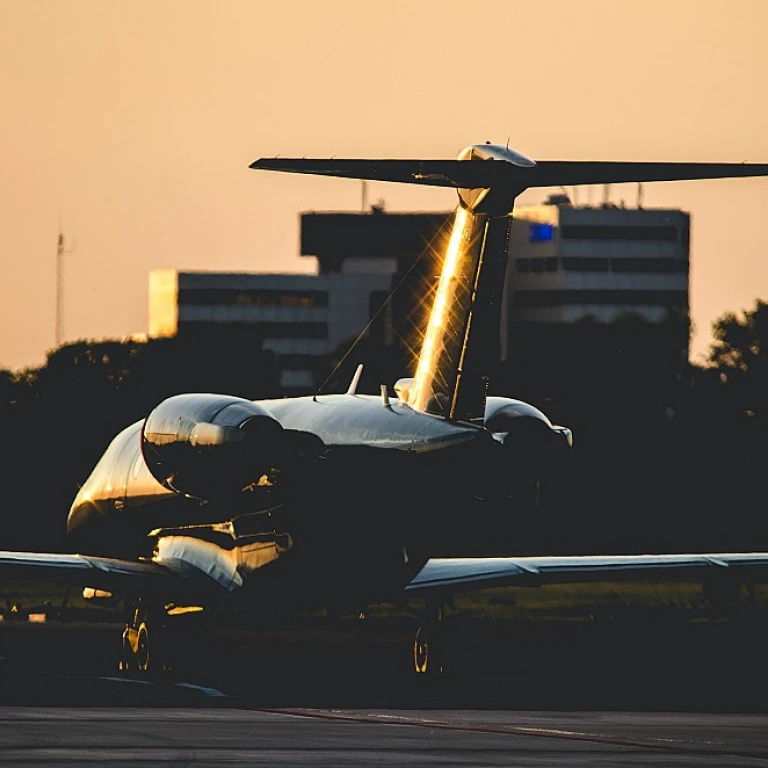
-large-teaser.webp)

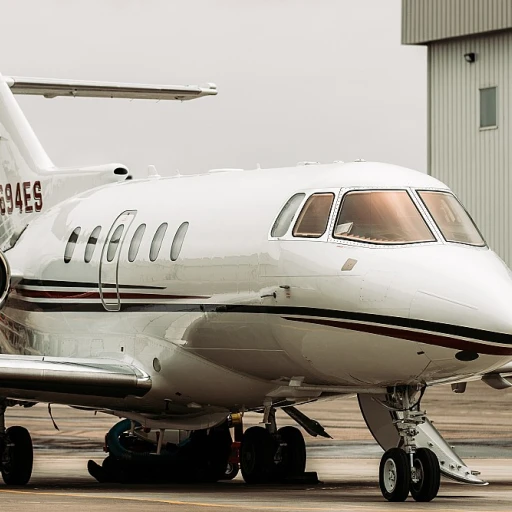
-large-teaser.webp)
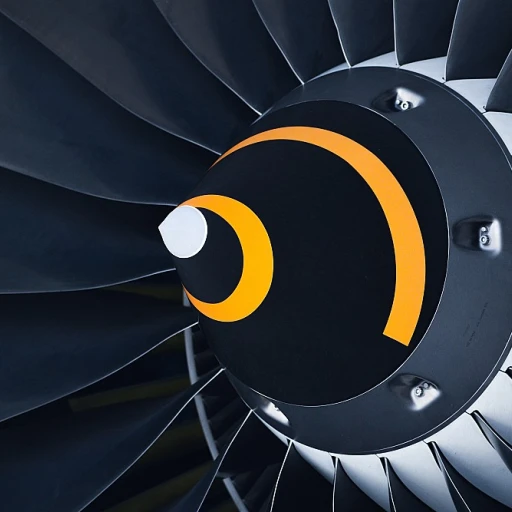
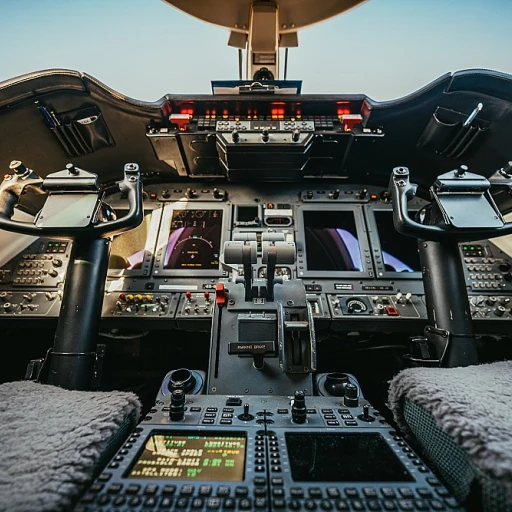
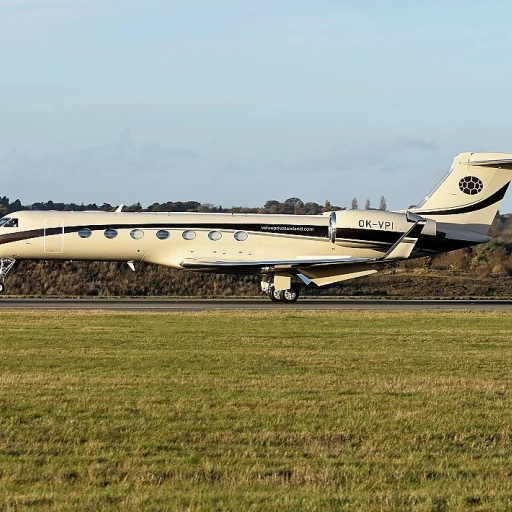

-large-teaser.webp)
-large-teaser.webp)
